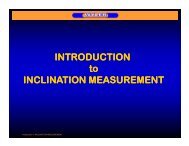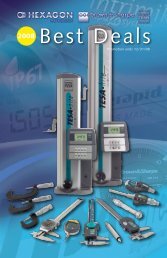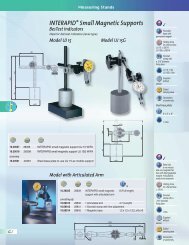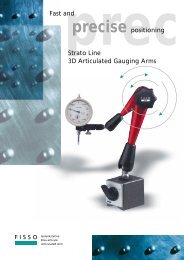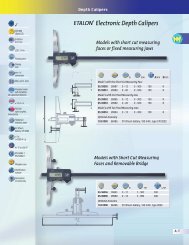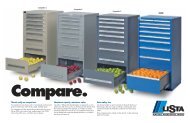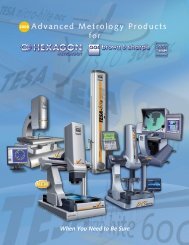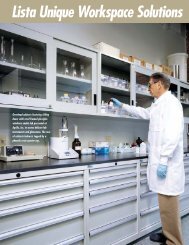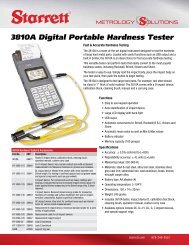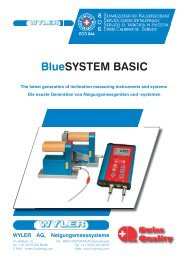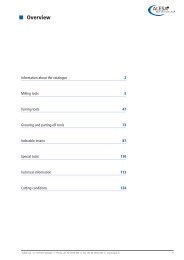TESA RUGOSURF 10G Surface roughness gage TESA - Swiss ...
TESA RUGOSURF 10G Surface roughness gage TESA - Swiss ...
TESA RUGOSURF 10G Surface roughness gage TESA - Swiss ...
You also want an ePaper? Increase the reach of your titles
YUMPU automatically turns print PDFs into web optimized ePapers that Google loves.
J-4<br />
<strong>Surface</strong> Roughness Testing<br />
Summary of Roughness Parameters<br />
Commonly Used<br />
Arithmetical mean deviation of the profile Ra (ISO 4287, DIN 4768)<br />
The arithmetical mean deviation Ra is the mean value of the absolute value<br />
of the profile departure y within the reference length l.<br />
Max. profile valley depth Rmax (DIN 4768)<br />
Among the existing single <strong>roughness</strong> depths Zi, the max. profile valley depth<br />
Rmax counts for the most significant within the total measuring length lm.<br />
According to ISO 4288 and DIN 4287 - Part 1, this parameter is also<br />
specified as Ry max.<br />
Mean <strong>roughness</strong> depth Rz DIN (DIN 4768)<br />
The mean <strong>roughness</strong> depth Rz is the arithmetical mean of the single <strong>roughness</strong><br />
depths of successive sampling lengths le.<br />
According to ISO 4287 and DIN 4762, the parameter Rz DIN is also<br />
specified as Ry5.<br />
Because Rz is named differently in DIN 4768 and ISO 4287, this para mater is<br />
also specified as Rz DIN or Rz ISO.<br />
When the parameter Rz is measured according to DIN, it is generally admitted<br />
that the extreme value ISO is also matched providing that<br />
Rz ISO is not exceeding Rz DIN .<br />
Application of Roughness Comparison Specimens<br />
These specimens for testing the surface finish quality have long proven their<br />
value in practical use.<br />
They serve for touch and/or sight comparisons with the surface of the workpieces<br />
that are manufactured using the same method. Condition is that<br />
materials have to be comparable.<br />
The comparison of the <strong>roughness</strong> of the<br />
workpiece surface is not quantitatively<br />
expressed. The extent to which the surfaces<br />
of both the specimen and the workpiece are<br />
matched is appreciated subjectively only.<br />
Sight comparison requires optimum light<br />
source angle. For small surfaces, the use of<br />
a magnifying glass with up to 8x magnification<br />
is recommended.<br />
Touch comparison is made using the finger<br />
nail or a small copper piece like a coin, for<br />
instance.<br />
Z1<br />
Pre-course<br />
Ie<br />
Z2<br />
l t<br />
Z3<br />
Rmax<br />
5 x l e = lm<br />
Z4<br />
Z5<br />
R a<br />
0<br />
y<br />
m<br />
Post-course<br />
l<br />
x



